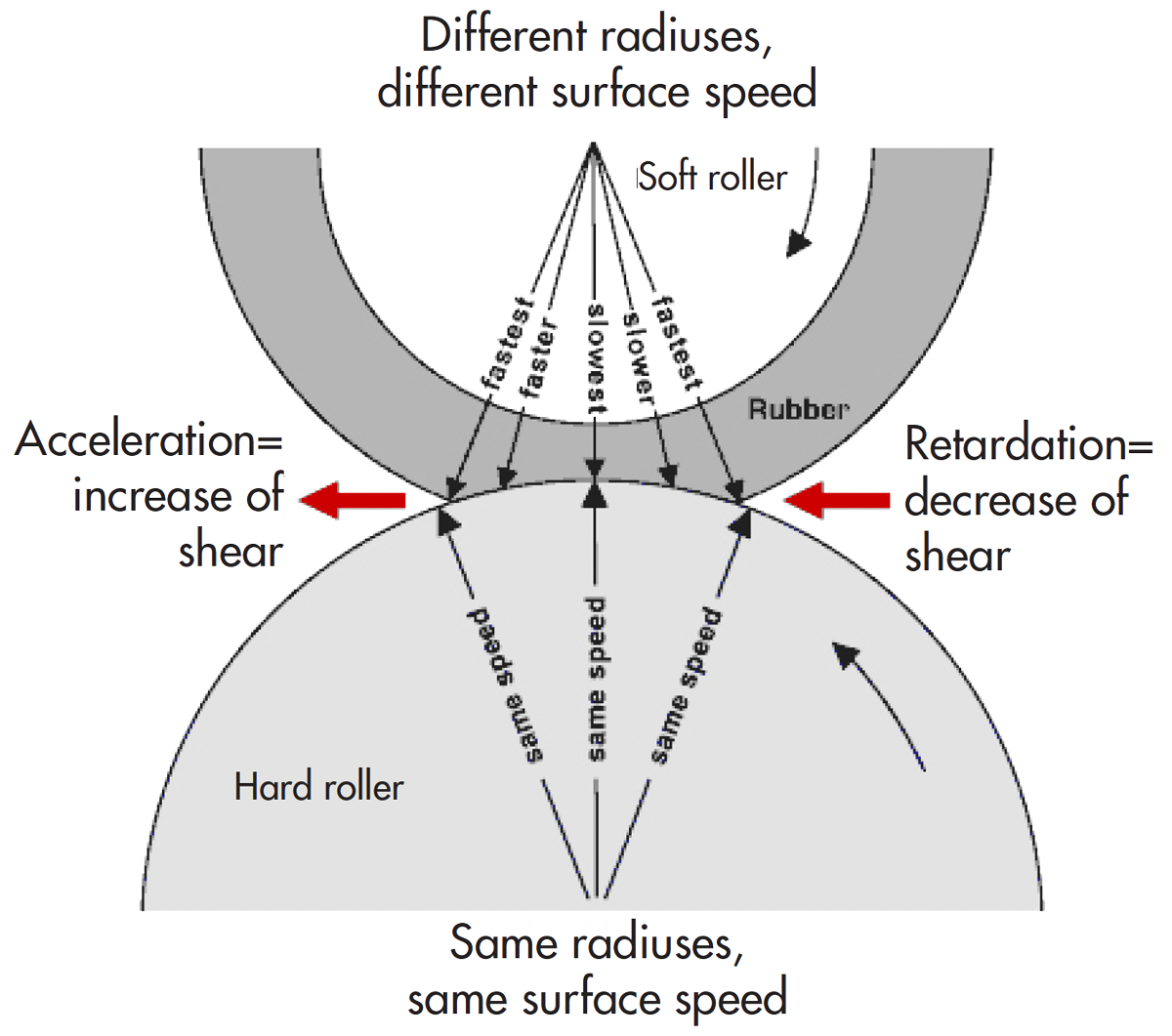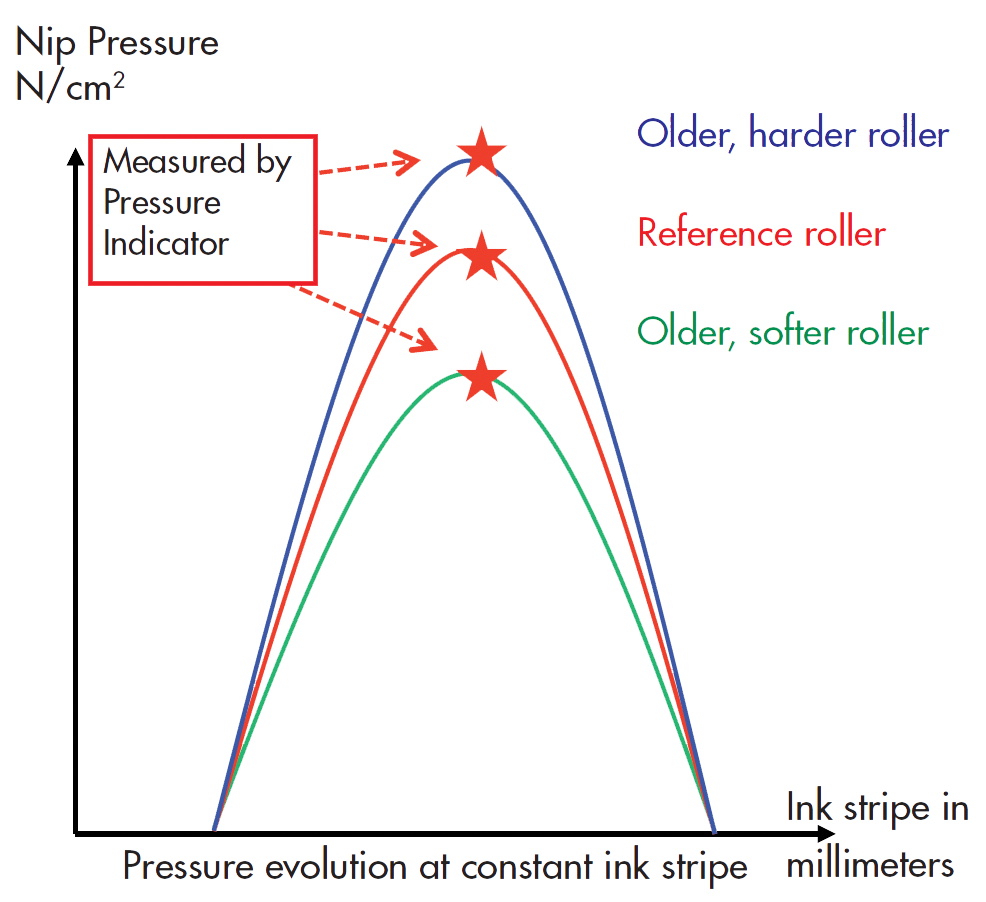Low Pressure Indicator

A true revolution
New nanotechnology enables control and setting of the pressure between offset rollers, ensuring a stable printing process and a reduction in the cost of consumables. At present, most printers still set rollers by estimating an ink stripe – the visual imprint when two rollers are pressed together. The conventional ink stripe setting method completely fails to measure nip pressure, which is the crucial process factor.
Shear force & peak pressure
 |
The ink and dampening solutions are processed and transported by the “shear force” created when two roller surfaces are in contact under pressure, with different surface speeds. Besides the shear force, ink adhesion to the rollers (viscosity) and surface roughness also affect the offset process. |
Rubber change = nip change.
|
When adjusting a roller nip, a common error is applying excess force to maintain a consistent ink stripe in spite of aging rollers, as they lose their flexibility and become harder. Consequently, to maintain a consistent ink stripe, the rollers are forced together with increasing force over time – resulting in incorrect and excessive nip pressure. This increases the shear force, pressure curve, and ink temperature (influencing the viscosity), which negatively affects the offset process. Perhaps surprisingly, the two rollers are not in direct physical contact during printing, separated by a very thin liquid film (ink, water, and emulsion), some mere thousandths of a millimeter thick. Gradually, the offset process will deteriorate and, if not controlled, may even cease if the rollers are pressed together to a point at which the thin film of fluid no longer moves through the nip. A roller may soften too. This will reduce nip pressure, changing nip characteristics and print quality. |
 |
Consequences of setting the rollers with too high pressure.


Cost & Energy savings
Ink, water, and energy consumption can be reduced if roller pressure is optimal. Excessive roller force raises nip temperature, lowering ink viscosity. Consequently, the ink absorbs more water, and the pressman compensates by increasing the amount of ink and water. A higher roller force also reduces roller life and increases electrical consumption.
Energy savings can be substantial. A general rule is that about half of the energy/electricity to drive an offset printing press goes into the roller train.
The Pressure Indicator – Low-Pressure version measures nip pressure instead, rapidly detecting changes in roller settings and rubber hardness/softness. The Pressure Indicator ensures that excessive or inadequate roller pressures are avoided.
Nip alignment is also more easily checked, as nip pressure responds more rapidly to change than nip width. Measurements are made in a semi-dynamic mode with moving rollers, similar to real-life printing. In short, roller settings are based on the principles of offset printing.
|
Simple to use Allow the rollers to draw the tip of the sensor blade through the nip. Then stop. Nip pressure is displayed instantaneously in Newton/cm2. Traceable Calibration™ Calibration is easy and traceable. Every calibration unit is checked against a reference administered by a “National Competent Body,” ensuring that measurements are traceable according to quality standards. |
PDFs
Contact ChromaChecker Support
Additional information and Support Form is available for logged users.